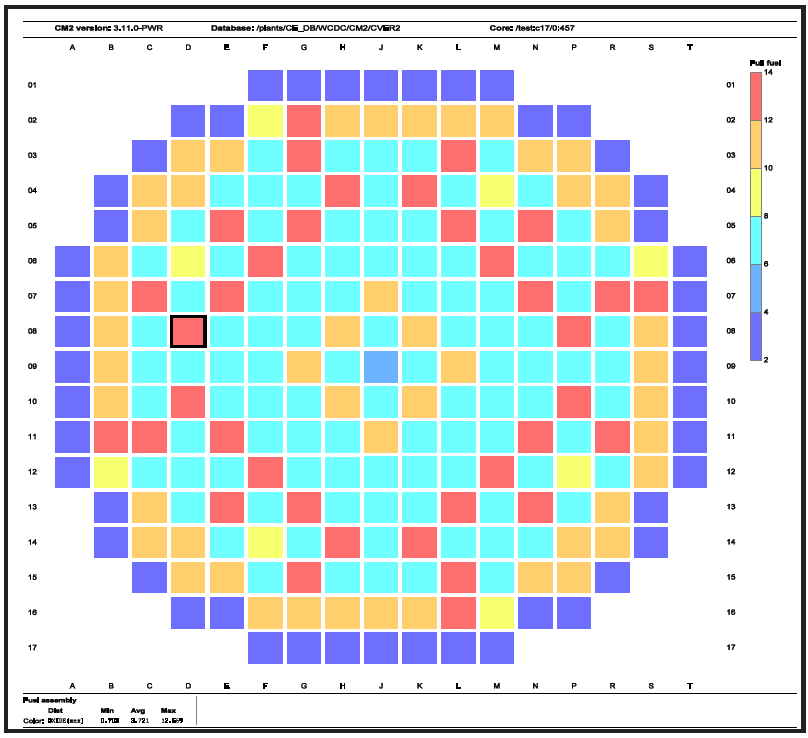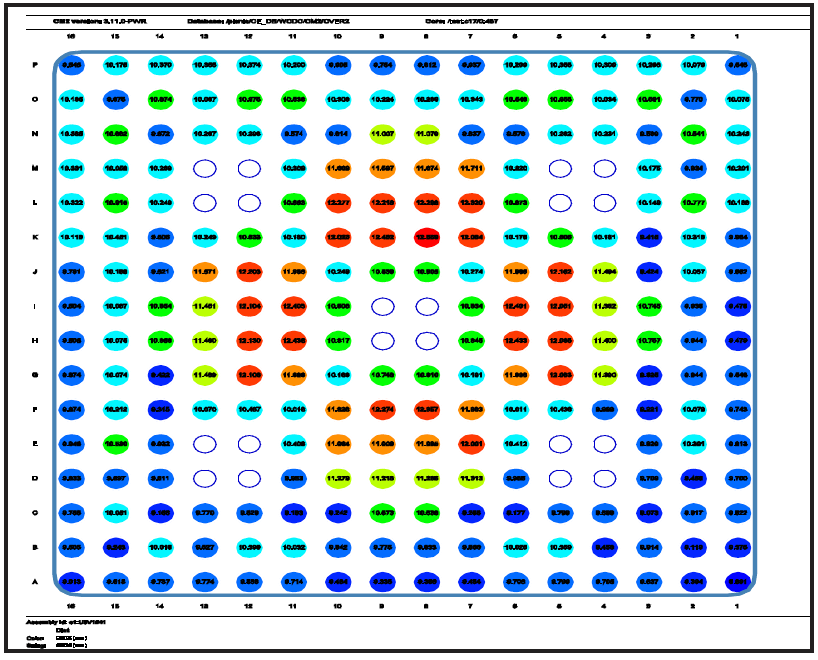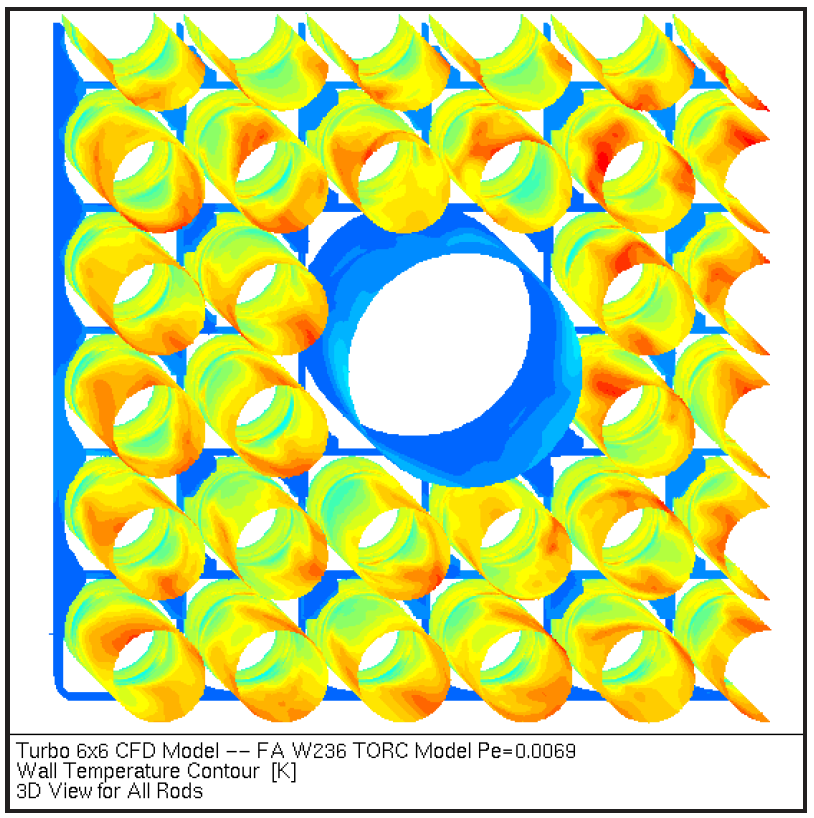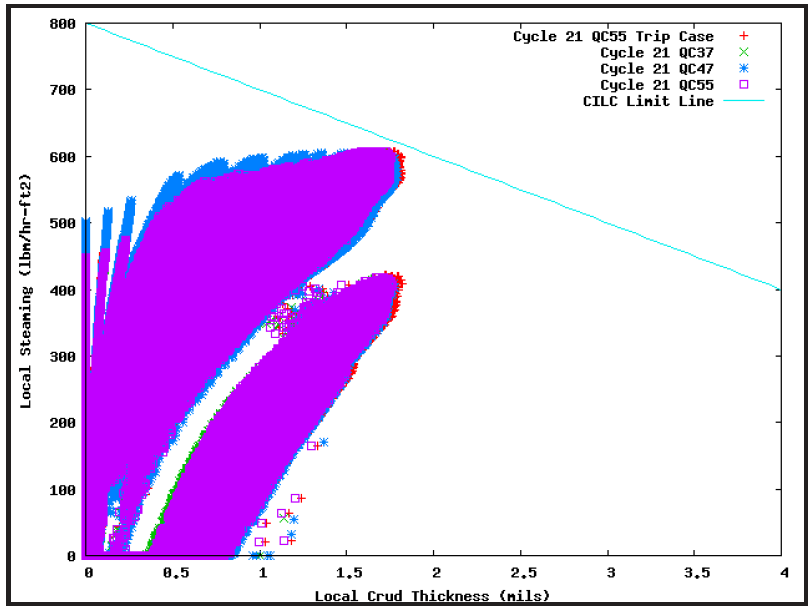Background
FUELDUTYDRV (FDD) is a best-estimate fuel component analysis tool that can process physics data, thermal-hydraulic (TH) analysis codes and mechanical data for fuel performance assessment of any and all fuel rods in the core. Using integrated and automated analysis techniques, the FDD analyzes local hot spots on fuel rods for local crud and corrosion effects to identify the risk of crud-induced localized corrosion (CILC). FDD also integrates the advanced boron-induced offset anomaly (BOA) code for the evaluation of core-wide crudding and the resulting crud-induced power shift (CIPS).
Description
FDD automates and integrates the running of BOA, VIPRE-W and TORC code to assess CIPS/ CILC risk and SAVAN code for assembly bow and calculates SRP 4.2 corrosion performance. FDD reduces the number of codes a user must be proficient in and leverages existing interfaces to automate the CIPS/CILC evaluation process. The automation incorporates extensive lessons learned in a well-controlled process to perform multiple analyses in every code run, which can then be documented in a single CalcNote.
FDD performs the following analyses:
- Corrosion with integrated ZIRLO® and Optimized ZIRLO™ clad corrosion models
- Hydrogen pickup calculation using latest models
- Coarse mesh crud evaluation for axial offset anomaly prediction
- Fine mesh multi-stage TH crud evaluation for CIPS/CILC with high fidelity computational fluid dynamics correction factors
- BOA 3.1 with the Electric Power Research Institute’s ( EPRI’s) latest CIPS models
- Clad oxidation and hydrogen pickup to provide additional margin for these parameters
- Chemistry evaluation platform for lithium, boron and zinc programs
- Beta capability for grid-to-rod fretting
Benefits
For Westinghouse pressurized water reactors that need fuel duty margin (CIPS, CILC, corrosion, grid-to-rod fretting), FDD provides increased margin by accurately forecasting fuel performance in 3D to allow fuel management changes to prevent adverse consequences during operation. FDD automates laborious hand manipulation of data to unlock margin, unlike running EPRI and Westinghouse codes and manually manipulating the results, which is cost-prohibitive and time-consuming. This is accomplished by integrating and automating multiple computer codes and former hand extraction and manipulation of data into an easy to set up and use package, as demonstrated by the long, successful use of HIDUTYDRV for Combustion Engineering design plants, now enhanced and extended for use on Westinghouse design plants in FDD.
Experience
Westinghouse has performed more than 35 reload analyses for corrosion, CIPS and CILC using FDD. Turnaround time is between one man-week for typical reload scope to three man-weeks for the most complex analysis. Manually performing these calculations would require between 1,000 to 2,000 man-hours and would be extremely error-prone. First-time application for a plant or new fuel product will require crud benchmarking, which requires additional effort. Since the implementation of CIPS/CILC prediction tools, Westinghouse customers have experienced no crud-related fuel events.





